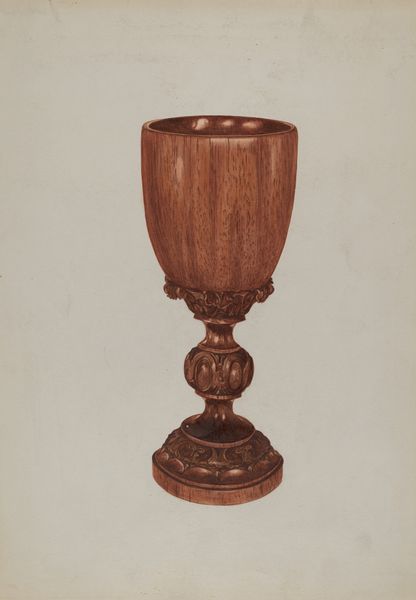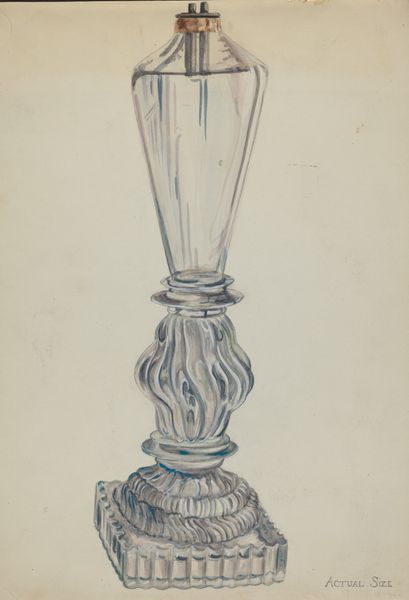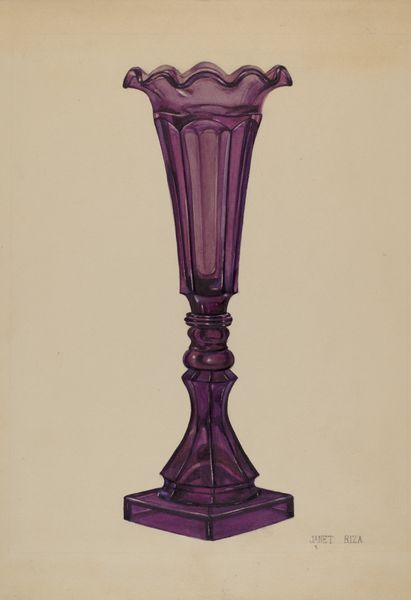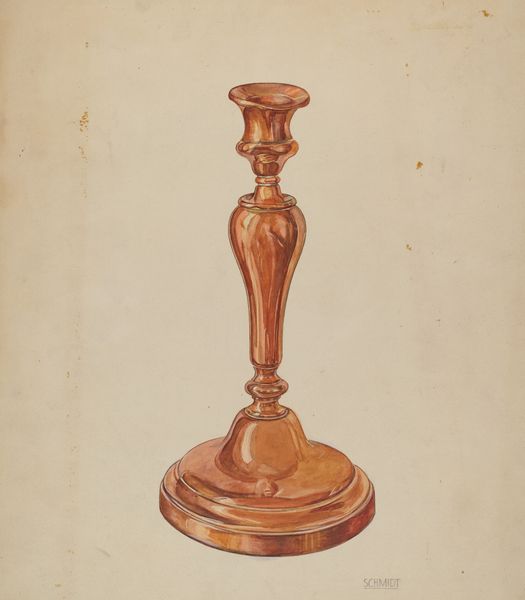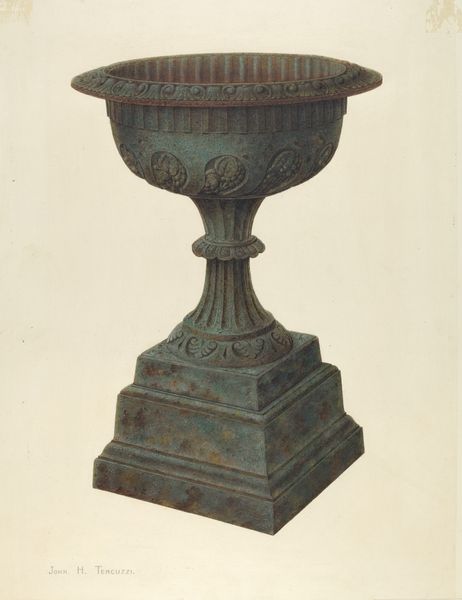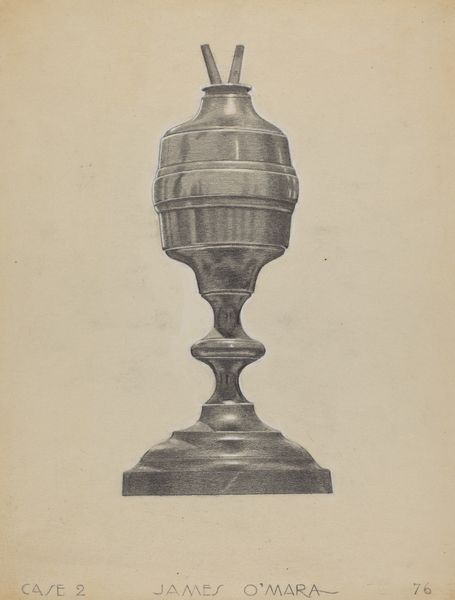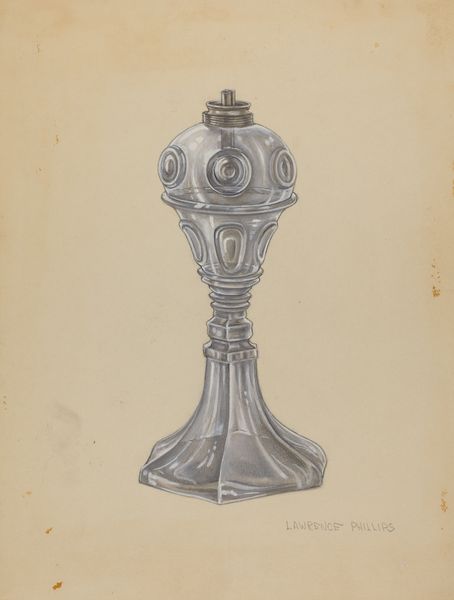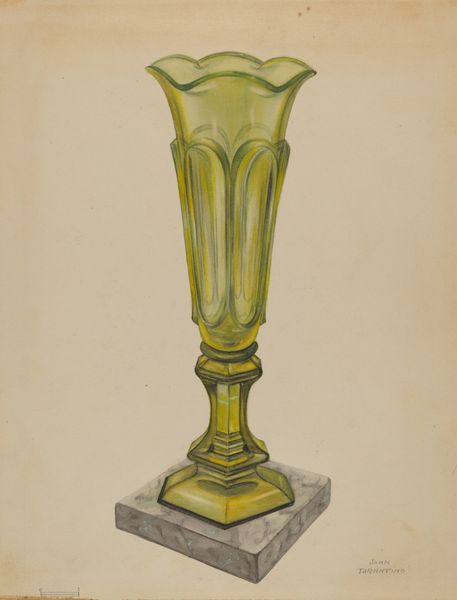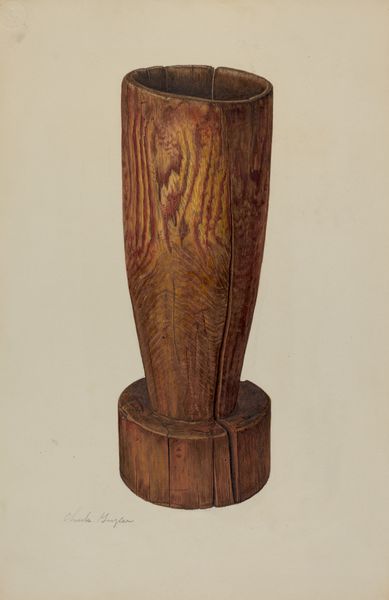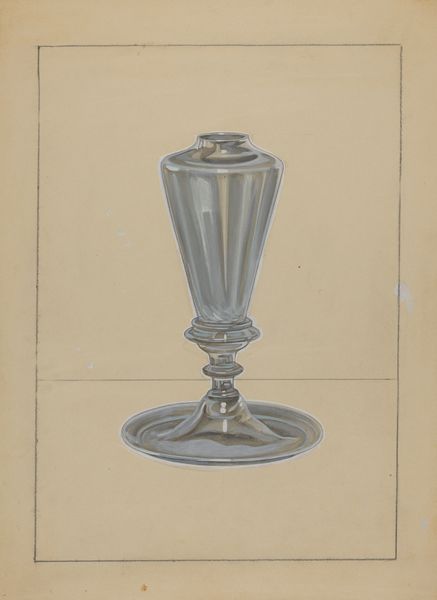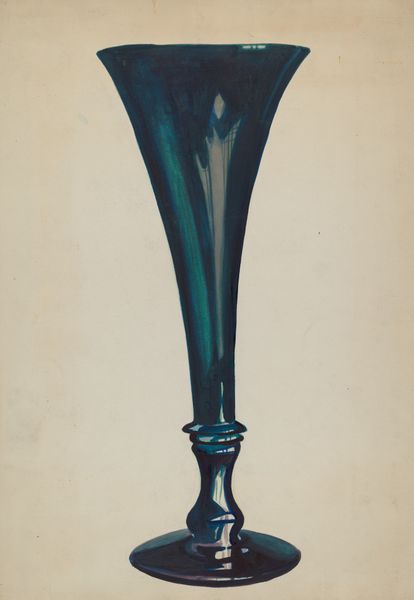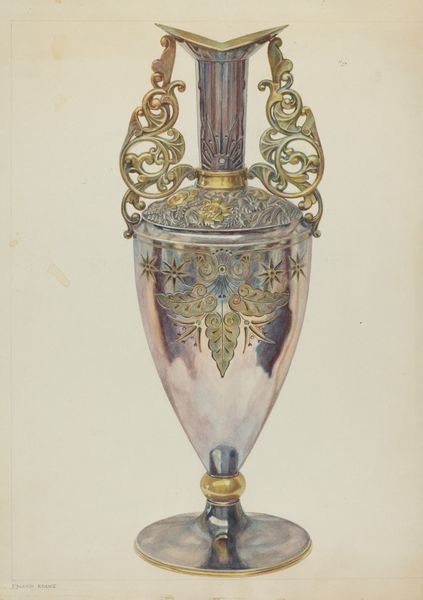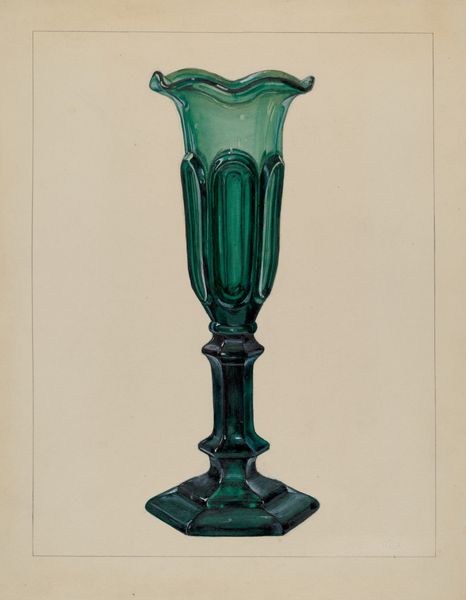
drawing, watercolor
#
drawing
#
sculpture
#
charcoal drawing
#
watercolor
#
geometric
#
modernism
#
watercolor
#
realism
Dimensions: overall: 55.4 x 29.7 cm (21 13/16 x 11 11/16 in.) Original IAD Object: 14 1/2" high
Copyright: National Gallery of Art: CC0 1.0
Curator: This is Charles Bowman’s “Coal Vase,” created in 1938. It’s rendered primarily with watercolor and drawing techniques. Editor: It has this weighty, almost somber presence, doesn't it? The stark black and geometric design convey a certain industrial melancholy. Curator: I agree. Thinking about 1938, we have to consider the sociopolitical landscape, the Depression still lingering, the ominous shadow of impending war. The 'Coal Vase' isn't just a still life, but a quiet monument to resilience amidst struggle, to the working class. The artist would have seen how industry literally reshaped labor, recasting human lives through materiality. Editor: Yes, its existence asks questions of industrialization's processes and material implications. A coal vase isn’t just functional, is it? Consider the labor extracted, both from the earth and bodies, in the production and aesthetic representation. And the craft too—how did Bowman translate weight and the heft of coal into watercolor? What does it reveal about materiality and representation, what’s actually valuable? Curator: Precisely! This image almost insists on connecting those dots. Coal, often powering those industries and extracted via arduous processes by underrepresented laborers. Is there commentary on what or who we ‘venerate’? Are these classic vase forms repurposed here? The very choice to elevate that labor into "art," especially with the techniques Bowman adopts, makes it something worth pausing over and critiquing. Editor: Looking at it in terms of object making…Bowman’s decision to use watercolor feels charged. Here is labor captured in drawing, with each media lending itself to this industrial age analysis, and perhaps Bowman used these mediums to comment on industrial materiality through the guise of portraiture. It demands close consideration of both aesthetic form and industrial functions. Curator: I'm glad we lingered on this piece. The act of representing coal is fraught, inviting layered readings regarding labor, class, and our historical moment. Editor: Agreed. Bowman has provided rich ground to think about how our materials come into being.
Comments
No comments
Be the first to comment and join the conversation on the ultimate creative platform.
